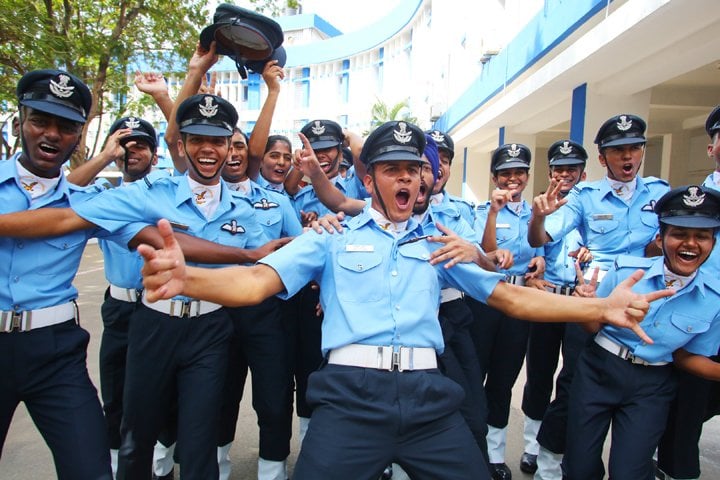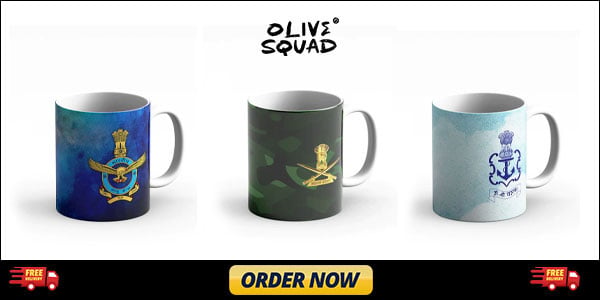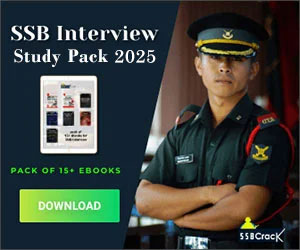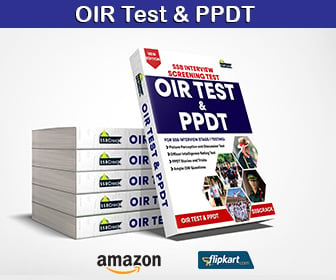The Air Force Selection Board (AFSB) interview is a critical phase in the selection process for candidates aspiring to join the Indian Air Force. Whether you’ve cleared the AFCAT or CDS written exam for flying, technical, or non-technical branches, thorough preparation for the AFSB interview is essential for success.
This comprehensive guide contains the most commonly asked questions in AFSB interviews, complete with strategic insights on how to answer them effectively. While the specific questions may vary, this resource covers all major categories to help you prepare thoroughly.
Understanding the AFSB Interview Process
The AFSB interview evaluates candidates on multiple dimensions including:
- Personality traits and officer-like qualities
- Leadership potential and decision-making abilities
- Communication skills and intellectual capacity
- Subject knowledge and awareness of current affairs
- Motivation and suitability for the Indian Air Force
The interview board assesses whether you possess the essential qualities required to become an effective officer in the Indian Air Force. It’s not merely about giving correct answers but demonstrating the right attitude, aptitude, and potential.
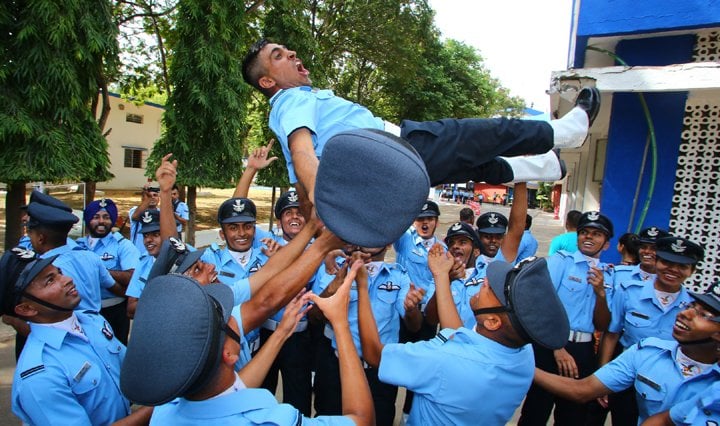
AFSB Interview Venues
The AFSB interviews are conducted at five designated centers across India:
- AFSB Dehradun
- AFSB Mysore
- AFSB Gandhinagar
- AFSB Varanasi
- AFSB Guwahati
Candidates can select their preferred venue based on availability after clearing the written examination.
100 AFSB Interview Questions with Strategic Answers
Personal Background Questions
- How did you prepare for the AFCAT written exam? Strategy: Highlight your systematic approach, mention specific resources used, and emphasize consistency in preparation. Show your determination and time management skills.
- Why do you have low marks in the AFCAT written exam? (if applicable) Strategy: Be honest about challenges faced but emphasize how you overcame them. Demonstrate learning from setbacks and your commitment to improvement.
- Why did your marks in the 12th drop? (if applicable) Strategy: Explain circumstances without making excuses. Focus on how you’ve grown since then and what you learned from the experience.
- How do you spend your time daily? Strategy: Describe a balanced routine that includes physical fitness, academic/professional development, and leisure activities. Show discipline and time management.
- How did you prepare for the AFSB interview? Strategy: Mention diverse preparation methods including physical training, knowledge enhancement, and personality development. Show your comprehensive approach.
Buy Now: AFSB Interview Preparation Books [100% Recommended]
Motivation and Career Goals
- Why do you want to join the Indian Air Force? Strategy: Express genuine passion for serving the nation, fascination with aviation, and admiration for IAF values. Avoid clichés and speak from personal conviction.
- Why did you opt for the flying/technical/non-technical branch of IAF? Strategy: Align your skills, qualifications, and interests with the specific requirements of your chosen branch. Show how your strengths match the role.
- What would you be if you do not join the armed forces? Strategy: Mention an alternative career that still utilizes your core skills but emphasize that joining the IAF remains your primary goal.
- How is your qualification going to help the Indian Air Force? Strategy: Connect your educational background with specific operational or administrative needs of the IAF. Show value-addition potential.
- What are your future plans? Strategy: Articulate a clear vision of your career progression within the IAF. Show commitment to long-term service and continuous professional development.
Knowledge about Indian Air Force
- What do you know about the Indian Air Force? Strategy: Demonstrate comprehensive knowledge about IAF’s history, role in national security, organizational structure, and significant achievements.
- What fighter planes is IAF using? Strategy: Name major fighter aircraft in the IAF fleet (Su-30MKI, Rafale, Mirage 2000, MiG-29, Tejas, etc.) and mention their primary capabilities.
- Tell all ranks of the Indian Air Force. Strategy: Recite accurately from Marshal of the Air Force down to Airman in correct sequence. Practice this thoroughly.
- Tell all ranks of the Indian Air Force in reverse order. Strategy: Practice reciting ranks from Airman up to Marshal of the Air Force flawlessly.
- How many commands does IAF have? Name them all. Strategy: List all seven operational commands (Western, Eastern, Central, South-Western, Southern, Training, and Maintenance) with their headquarters.
Technical Knowledge
- What engine is being used in TEJAS? Strategy: Mention the GE F404-IN20 engine specifically, and note that newer variants will use the more powerful GE F414 engines.
- Explain how an airplane flies. Strategy: Clearly explain the four forces (lift, weight, thrust, drag) and Bernoulli’s principle in simple but accurate terms.
- What is AWACS? Strategy: Explain Airborne Warning And Control System as a mobile, long-range radar system for surveillance and battle management with examples like the IAF’s Phalcon AWACS.
- How does radar work? Strategy: Explain radio detection and ranging principles, pulse transmission, echo reception, and signal processing in clear terms.
- Explain Bernoulli’s principle. Strategy: Describe how faster-moving air creates lower pressure above the wing compared to below, generating lift. Relate this to aircraft wing design.
Current Aircraft and Defense Systems
- What do you think about the capability of TEJAS? Strategy: Highlight TEJAS’s strengths (agility, advanced avionics, radar, BVR capability) while acknowledging areas of ongoing development.
- Do you know what are Apache and Chinook? Explain. Strategy: Describe Apache as an attack helicopter with precision strike capability and Chinook as a heavy-lift transport helicopter, mentioning their specific roles in IAF operations.
- What are your thoughts on the Apache and Chinook deal? Strategy: Discuss the strategic importance of these acquisitions for India’s defense capabilities and how they fill specific operational gaps.
- What is the difference between Mirage 2000 and MiG-21? Strategy: Compare generations, capabilities, avionics, service history, and roles in the IAF fleet, highlighting the technological advancement between them.
- What is S-400? What is it used for? Strategy: Describe it as an advanced Russian air defense missile system capable of engaging multiple aerial targets at various ranges, emphasizing its strategic importance.
Military Operations and Current Affairs
- What do you know about Balakot Airstrike by Indian Air Force? Strategy: Provide accurate details about the February 2019 operation, including its objective, execution, and strategic significance without political commentary.
- What is SPICE 2000? Strategy: Explain it as a precision-guided bomb kit used in the Balakot strikes, highlighting its accuracy and standoff capabilities.
- What would you do if you were in place of Wing Commander Abhinandan? Strategy: Emphasize adherence to military protocol, courage under pressure, and protecting sensitive information while maintaining dignity.
- What is the contribution of the Indian Air Force in the Kargil War? Strategy: Discuss Operation Safed Sagar, highlighting precision bombing, air superiority, reconnaissance, and casualty evacuation roles.
- According to you, what is the best way to tackle terrorism? Strategy: Present a balanced approach combining intelligence operations, international cooperation, addressing root causes, and strategic military actions when necessary.
Defense Technology and Equipment
- What is AMRAAM? Strategy: Describe it as an Advanced Medium-Range Air-to-Air Missile used by modern fighter aircraft, mentioning its beyond visual range capability.
- What is F-16? Strategy: Detail it as an American multi-role fighter aircraft operated by Pakistan Air Force, mentioning its generations and capabilities.
- How do we trace enemy aircraft? Strategy: Explain radar systems, IFF (Identification Friend or Foe), AWACS, ground-based air defense, and signal intelligence methods.
- What is FGFA? Strategy: Describe the Fifth Generation Fighter Aircraft program (now superseded by other projects) and its intended role in enhancing IAF capabilities.
- What is MMRCA? Strategy: Explain the Medium Multi-Role Combat Aircraft tender process leading to the Rafale acquisition, highlighting its significance for IAF modernization.
Also Read: 20 Questions On Aircraft Asked In AFSB Interview
Indigenous Defense Production
- Why did it take so much time in TEJAS induction? Strategy: Discuss the challenges in indigenous fighter development including technological complexities, resource constraints, and certification requirements without criticizing any organization.
- What is the contribution of DRDO? Strategy: Highlight major DRDO achievements in missile systems, electronic warfare, aeronautics, and other defense technologies.
- Name some indigenous weapons. Strategy: List key Indian-developed systems like Astra missile, Akash SAM, BrahMos cruise missile, Pinaka rocket system, etc.
- What is HAL AMCA programme? Strategy: Describe the Advanced Medium Combat Aircraft program as India’s fifth-generation fighter development project, mentioning its stealth features and timeline.
- Tell 5 qualities of TEJAS. Strategy: Highlight its light weight, agility, advanced avionics, digital fly-by-wire controls, and multi-role capability.
International Relations and Defense Deals
- What do you know about the Rafale deal? Strategy: Provide factual information about the acquisition of 36 Rafale fighters from France, their capabilities, and strategic importance.
- Tell 5 features of Rafale fighter jet. Strategy: Highlight its omnirole capability, advanced AESA radar, long-range weapons, SPECTRA electronic warfare system, and supercruise ability.
- What are the latest defense deals you know about? Strategy: Mention recent acquisitions like additional MiG-29s and Su-30MKIs, S-400 systems, and indigenous projects under the Atmanirbhar Bharat initiative.
- What is COMCASA agreement between US-India? Strategy: Explain the Communications Compatibility and Security Agreement that enables secure communication between US and Indian armed forces.
- What is India’s defense budget? Strategy: Provide the latest figure (approximately ₹5.94 lakh crore for 2023-24) and briefly discuss its allocation across services.
Military Hardware and Specifications
- Name some best fighter jets in the world. Strategy: Mention F-35, F-22 Raptor, Rafale, Su-57, J-20, Eurofighter Typhoon with brief points about what makes each advanced.
- Name A2A missiles used by IAF. Strategy: List Astra, R-73, R-77, MICA, Meteor with their respective ranges and capabilities.
- Name ballistic missiles used by India. Strategy: Mention the Agni series (I through V), Prithvi series, K-15 (Sagarika), with their respective ranges.
- Name some helicopters used by IAF. Strategy: List Apache AH-64E, Chinook CH-47F, Mi-17V5, ALH Dhruv, Light Combat Helicopter, Chetak, and Cheetah.
- What is MACH speed? Strategy: Define it as the ratio of an object’s speed to the speed of sound in the surrounding medium, explaining that Mach 1 equals the speed of sound.
Defensive and Offensive Systems
- How many missiles can TEJAS carry? Strategy: Specify the weapons payload capacity and mention compatibility with various air-to-air and air-to-ground missiles.
- What missiles/weapons do we use in fighter aircraft? Strategy: Categorize by mentioning air-to-air (Astra, R-73, R-77, MICA, Meteor), air-to-ground (SPICE, Crystal Maze), and anti-ship missiles (BrahMos).
- Name 2 transport aircraft. Strategy: Mention C-17 Globemaster III and C-130J Super Hercules, highlighting their payload capacity and operational roles.
- Which trainer jet are we using currently? Strategy: Mention Hawk Mk 132, Pilatus PC-7, and HAL HTT-40 with their respective training stages.
- What is the difference between a cruise missile and a ballistic missile? Strategy: Contrast flight paths (ballistic arc vs. terrain-following), propulsion methods, speed, range, and detection challenges.
Leadership and Personal Qualities
- How can you help the Indian Air Force? Strategy: Connect your specific skills, knowledge, and personal qualities to the needs of the service. Show how you can contribute uniquely.
- One thing you would like to improve in the Indian Air Force. Strategy: Suggest a reasonable improvement area respectfully, showing understanding of challenges and potential solutions.
- Tell 3 negative qualities in your father. Strategy: Be honest but respectful, showing your ability to observe objectively without being disrespectful or overly critical.
- Tell 2 bad and 2 good qualities of your best friend. Strategy: Demonstrate balanced judgment and insight into character assessment without being judgmental.
- What went wrong in your last attempts? (if applicable) Strategy: Show self-awareness by identifying specific areas for improvement and concrete steps taken to address them.
Space and ISRO Related
- Tell recent achievements of ISRO. Strategy: Highlight Chandrayaan-3’s successful landing, upcoming Gaganyaan mission, and other recent satellite launches and technological advancements.
Military Organization and Leadership
- Who is Marshal of the Indian Air Force? Strategy: Name Arjan Singh (deceased) as the only officer to have held this rank, showing respect for IAF history.
- What is the full form of CPSS? Strategy: Explain Combined Preliminary Screening System, a computerized test during the selection process.
- Do you know where you are going to get trained if selected for Indian Air Force? Strategy: Mention Air Force Academy at Dundigal for flying branch, Air Force Technical College Bangalore for technical branch, and appropriate training centers for other branches.
- What do you know about COSC (Chiefs of Staff Committee)? Strategy: Explain its role in inter-service coordination and mention that it has been superseded by the creation of the Chief of Defence Staff position.
- Name Army/IAF/Navy chief. Strategy: Provide current names of all three service chiefs and the Chief of Defence Staff.
Strategic and Missile Systems
- What do you know about Nirbhay cruise missile? Strategy: Describe it as India’s indigenous long-range subsonic cruise missile with terrain-hugging capability and range of about 1000-1500 km.
- Explain about ICBM. Strategy: Define Intercontinental Ballistic Missile as long-range (5,500+ km) missile primarily designed for nuclear weapons delivery, mentioning India’s Agni-V as an example.
Personal Development
- How do you spend your salary/pocket money? Strategy: Demonstrate financial responsibility, balanced priorities, and sound judgment in resource allocation.
- What are all competitive exams you have written with scores? Strategy: Be honest about your academic journey and highlight improvements over time if applicable.
- Being an engineering student, why are you applying for flying branch? (if applicable) Strategy: Connect your technical knowledge with aviation passion and explain how engineering background enhances your potential as a pilot.
- Why did you not apply for NDA? (if applicable) Strategy: Provide honest reasons without criticizing the NDA path, focusing on your current readiness and determination.
- Why did you fail in NDA exam? (if applicable) Strategy: Accept responsibility, show learning from experience, and highlight growth since then.
- What will you do if you do not get selected here? Strategy: Show resilience and determination to try again while continuing self-improvement, indicating that this is your committed path.
Advanced Defense Concepts
- What is ICBM? Strategy: Define Intercontinental Ballistic Missile, mentioning India’s Agni series and their strategic importance for nuclear deterrence.
- What is HAL TEDBF? Strategy: Explain the Twin Engine Deck Based Fighter program intended to develop carrier-based aircraft for the Indian Navy.
- What are the challenges facing the IAF today? Strategy: Discuss squadron strength, modernization needs, border security challenges, and technological advancements balanced with budgetary considerations.
- How has IAF’s role evolved in recent conflicts? Strategy: Highlight precision strike capabilities, intelligence gathering, and integrated operations with other services in modern conflict scenarios.
- What is your understanding of network-centric warfare? Strategy: Explain it as the integration of sensors, decision-makers, and weapon systems for enhanced battlefield awareness and response.
- What recent technological advancements are changing air warfare? Strategy: Discuss unmanned systems, stealth technology, hypersonic weapons, electronic warfare, and artificial intelligence applications.
Current Defense Partnerships
- What do you know about India-France defense cooperation? Strategy: Highlight strategic partnership including Rafale acquisition, joint exercises, and technology sharing agreements.
- How is India diversifying its defense procurement? Strategy: Discuss the balanced approach to acquisitions from Russia, USA, France, Israel while emphasizing indigenous development.
- What do you understand by the term ‘Atmanirbhar Bharat’ in defense? Strategy: Explain India’s push for self-reliance in defense manufacturing through domestic production and reduced import dependence.
- What is the significance of Quad for India’s defense? Strategy: Discuss the strategic importance of the Quadrilateral Security Dialogue with USA, Japan, and Australia in Indo-Pacific security.
- How does India balance its defense relationships with Russia and the USA? Strategy: Explain India’s strategic autonomy in maintaining positive relations with both nations despite their tensions.
Emerging Defense Technologies
- What do you know about unmanned combat aerial vehicles? Strategy: Discuss their growing importance, India’s DRDO programs like AURA/Ghatak, and their potential impact on future air warfare.
- How might artificial intelligence change air combat? Strategy: Explore AI applications in target recognition, autonomous operations, predictive maintenance, and pilot assistance systems.
- What is your understanding of space-based military assets? Strategy: Discuss military satellites for communication, reconnaissance, and early warning, and India’s capabilities in this domain.
- What are hypersonic weapons and their significance? Strategy: Explain weapons traveling at Mach 5+ speeds, their strategic impact, and India’s BrahMos-II development.
- How is cyber warfare relevant to air force operations? Strategy: Discuss protection of command systems, potential threats to networked platforms, and the integrated nature of modern warfare.
Personal Scenarios
- If your aircraft develops a technical fault in enemy territory, what would you do? Strategy: Outline a structured approach: attempt to reach friendly airspace if possible, follow emergency procedures, communicate situation, and if ejection is necessary, follow survival protocols.
- How would you handle a disagreement with your superior officer? Strategy: Emphasize respectful communication, understanding chain of command, and focusing on mission requirements while expressing concerns appropriately.
- If you spot unethical behavior by a colleague, how would you address it? Strategy: Describe a graduated approach starting with direct conversation, then using proper reporting channels if necessary, prioritizing integrity while maintaining unit cohesion.
- How would you adjust to the disciplined lifestyle of the Air Force? Strategy: Highlight any prior experience with structured environments, your personal discipline, and eagerness to embrace the service ethos.
- How do you handle stress and pressure? Strategy: Describe specific techniques you use for stress management, providing examples of high-pressure situations you’ve handled effectively.
Vision for the Future
- How do you see the future of air warfare evolving? Strategy: Discuss increasing role of unmanned systems, network-centric operations, space integration, and advanced weapons while emphasizing continued importance of trained human operators.
- What role should India play in international peacekeeping? Strategy: Present a balanced view of India’s contributions to UN missions while maintaining focus on national security priorities.
- How can the Air Force contribute to disaster relief operations? Strategy: Highlight airlift capability, rapid deployment, reconnaissance, and specialized equipment for humanitarian assistance.
- What changes do you anticipate in pilot training with new technologies? Strategy: Discuss integration of simulators, VR/AR systems, and AI-assisted training while emphasizing core piloting skills.
- What qualities make a good leader in the Air Force? Strategy: Emphasize integrity, technical competence, decision-making ability, communication skills, and care for subordinates as essential leadership traits.
Conclusion
Success in the AFSB interview requires thorough preparation across multiple dimensions including technical knowledge, current affairs awareness, and personal development. While memorizing answers is not recommended, understanding the core principles behind these questions will help you formulate authentic, confident responses.
Remember that the selection board is looking for officer-like qualities, leadership potential, and genuine motivation rather than rehearsed answers. Focus on developing a well-rounded personality and stay updated with current developments in defense and aviation.
Approach your interview with confidence, honesty, and clarity of thought. Good luck with your AFSB interview!

